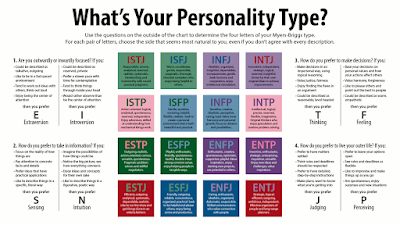Bringing Characters to Life: Crafting Depth, Flaws, and Growth in Storytelling
By Olivia Salter
1. Depth and Complexity: Create characters that resonate with readers by giving them depth, flaws, and motivations.
- Depth: Characters with depth are well-rounded and multi-dimensional. They have a rich inner life, complex emotions, and a history that shapes their actions and decisions.
- Flaws: Flaws make characters relatable and believable. They show that characters are not perfect and that they make mistakes. Flaws can also create conflict and drive the story forward.
- Motivations: Motivations are the reasons why characters do what they do. They are the driving force behind their actions and decisions. Motivations can be complex and multifaceted, and they can change over time.
By giving characters depth, flaws, and motivations, you can create characters that readers will care about and remember. These characters will feel real and relatable, and they will stay with readers long after they have finished reading your story.
Here are some tips for creating characters with depth, flaws, and motivations:
- Get to know your characters. Spend time thinking about their backstory, their fears, their hopes, and their dreams. The more you know about your characters, the more believable they will be.
- Give your characters flaws. Everyone has flaws, and your characters should be no exception. Flaws can make your characters more interesting and relatable.
- Give your characters motivations. What do your characters want? What are they afraid of? What are they willing to do to achieve their goals? Strong motivations will make your characters more compelling.
- Show, don't tell. Don't just tell your readers about your characters' depth, flaws, and motivations. Show them through your characters' actions and dialogue.
- Let your characters grow and change. Characters should not be static. They should grow and change over the course of your story. This will make them more interesting and believable.
By following these tips, you can create characters that will repsonate with readers and make your stories more engaging and memorable.
2. Backstory: Develop a rich backstory for each character to inform their actions and dialogue.
A character's backstory is the history and experiences that have shaped them into the person they are today. It includes their family, friends, loves, losses, triumphs, and failures. A well-developed backstory can make a character more believable, relatable, and interesting.
Here are some tips for developing a rich backstory for your characters:
- Start with the basics: What is your character's name, age, gender, and occupation? Where were they born and raised? What is their family like?
- Consider their formative experiences: What were the most important events in their childhood and adolescence? Did they have any traumatic experiences? Did they achieve any significant milestones?
- Explore their relationships: Who are the most important people in their life? How have these relationships shaped them? Have they experienced any significant losses or betrayals?
- Develop their goals and dreams: What do they want to achieve in life? What are they afraid of? What are they willing to sacrifice to get what they want?
- Consider their flaws and strengths: What are their weaknesses and strengths? How do these qualities affect their behavior?
- Think about their voice: How do they speak? What kind of language do they use? Do they have any distinctive speech patterns or mannerisms?
Once you have a solid understanding of your character's backstory, you can start to use it to inform their actions and dialogue. For example, if your character had a traumatic childhood, they may be more prone to anxiety and fear. If they lost a loved one, they may be more withdrawn and guarded.
Here are some specific examples of how backstory can inform character actions and dialogue:
- A character who grew up poor may be more frugal and cautious with money.
- A character who was bullied as a child may be more sensitive and defensive.
- A character who lost a parent may be more determined to succeed.
- A character who was raised in a strict religious household may be more judgmental and intolerant.
By taking the time to develop a rich backstory for each of your characters, you can create more believable, complex, and interesting characters that will resonate with your readers.
3. Character Arcs: Plan out character arcs to show how your characters grow and change throughout the story.
A character arc is the transformation or inner journey of a character over the course of a story. It's how a character changes and evolves in response to the challenges and conflicts they face. A well-developed character arc can make your story more engaging and memorable.
Here are some tips for planning character arcs:
- Start with a clear starting point. What are your character's strengths, weaknesses, beliefs, and goals at the beginning of the story?
- Identify a central conflict. What is the main challenge or obstacle that your character will face? This conflict should push them to grow and change.
- Determine the desired outcome. What do you want your character to learn or achieve by the end of the story? This will help you shape their arc.
- Break down the arc into stages. Divide your character's journey into smaller steps or stages. This will help you track their progress and ensure that their growth is believable and gradual.
- Consider the catalyst for change. What event or experience will trigger your character's transformation? This could be a major event, a series of smaller events, or a gradual realization.
- Show, don't tell. Use actions, dialogue, and internal monologue to reveal your character's growth. Avoid simply stating that they have changed.
- Make the change believable. The change should be motivated by the character's experiences and personality. It should also be consistent with their character arc.
Here are some common character arc types:
- The Hero's Journey: This classic arc involves a character who goes on a quest, faces challenges, and returns transformed.
- The Rags to Riches: This arc follows a character who rises from humble beginnings to wealth or power.
- The Riches to Rags: This arc is the opposite of the Rags to Riches arc. A character falls from a high position to a low one.
- The Villain's Journey: This arc explores the motivations and transformation of a villainous character.
- The Coming-of-Age: This arc follows a young character who matures and learns important life lessons.
By carefully planning your character arcs, you can create compelling stories that resonate with your readers.







